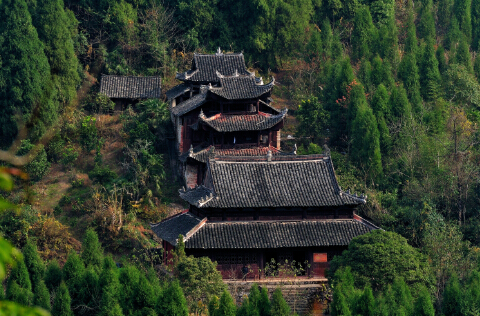Behind the inscription of Yongshun Laosicheng on the World Heritage List
By Feng Zhiwei (chinadaily.com.cn) Updated: 2015-07-17 10:38Moreover, the local people were even more positive in archaeological excavation. Since 2010, tens of thousands of persons of them participated in the excavation of the Tusi site of Laosicheng. At the most, over 160 workers were skillfully flicking the dust from the site with brushes to part the veil of its mysteriousness.
When the efforts to bid for the World Heritage List expanded from the government to the folks, the folks indeed entered into the work with great strength. Xiang Shengfu, a 73-year-old Tujia national, is a native. After he retired in 2002, Xiang has devoted himself to studying Laosicheng, and has published such books as The Tusi Regime, Rise and Fall of the Tusi System in Xizhou and Folktales in Laosicheng, and wrote two songs, namely The Beautiful Lingxi River and Laosicheng, My Home.
"We did it, and we are reassured." Xiang Shengfu can hardly conceal the excitement and joy inside him. In Laosicheng, cleaners, guards or performers in the folklore culture performance art troupes are doing their respective parts for the successful inscription of Laosicheng on the World Heritage List.
 |
|
Seen from afar, the Hall of Patriarch in Laosicheng is vibrant against the vegetation. |
The road of the bid for the World Heritage List is long. Encourage though it is, the success this time is by no means where Laosicheng stops development. It is developing forward.
The first problem would be about development and protection. Like many sites, once an ancient cultural site is involved in the development of tourism, the problem, which has not been satisfyingly settled, is how to demonstrate its vigor and vitality and better preserve it.
But one thing is for sure, for the locals or the tourists, the attractiveness of Laosicheng lies in its originality and uniqueness. Once its historical atmosphere is broken, the development of Laosicheng will inevitably fail.
On the other hand, economic factor can never be made the decisive factor in the development of Laosicheng. In history, there are cases where cultural sites were not well preserved for the pursuit of profits. The Cologne Cathedral in Germany and the heritage sites in Lijiang have been "covered with scratches" after a fast development period of the tourist economy.
Obviously, the principles of the market economy will fail in the development of cultural sites. Unlike general commodities, cultural sites have the cultural values, which even go beyond the economic growth brought about by tourism development. That's why local governments should better play its guiding role therein; help the developers find the best points to combine the preservation of cultural sites with tourism development; and form virtuous cycles of development and preservation.
The Tusi regime with rich cultural deposits has been there after more than 800 years of trials and hardships. The successful inscription of it on the World Heritage List starts a new chapter for Laosicheng. This "pearl" in the mountains in northwest Hunan will lighten up, only that we don't know if it will still be there in centuries.











